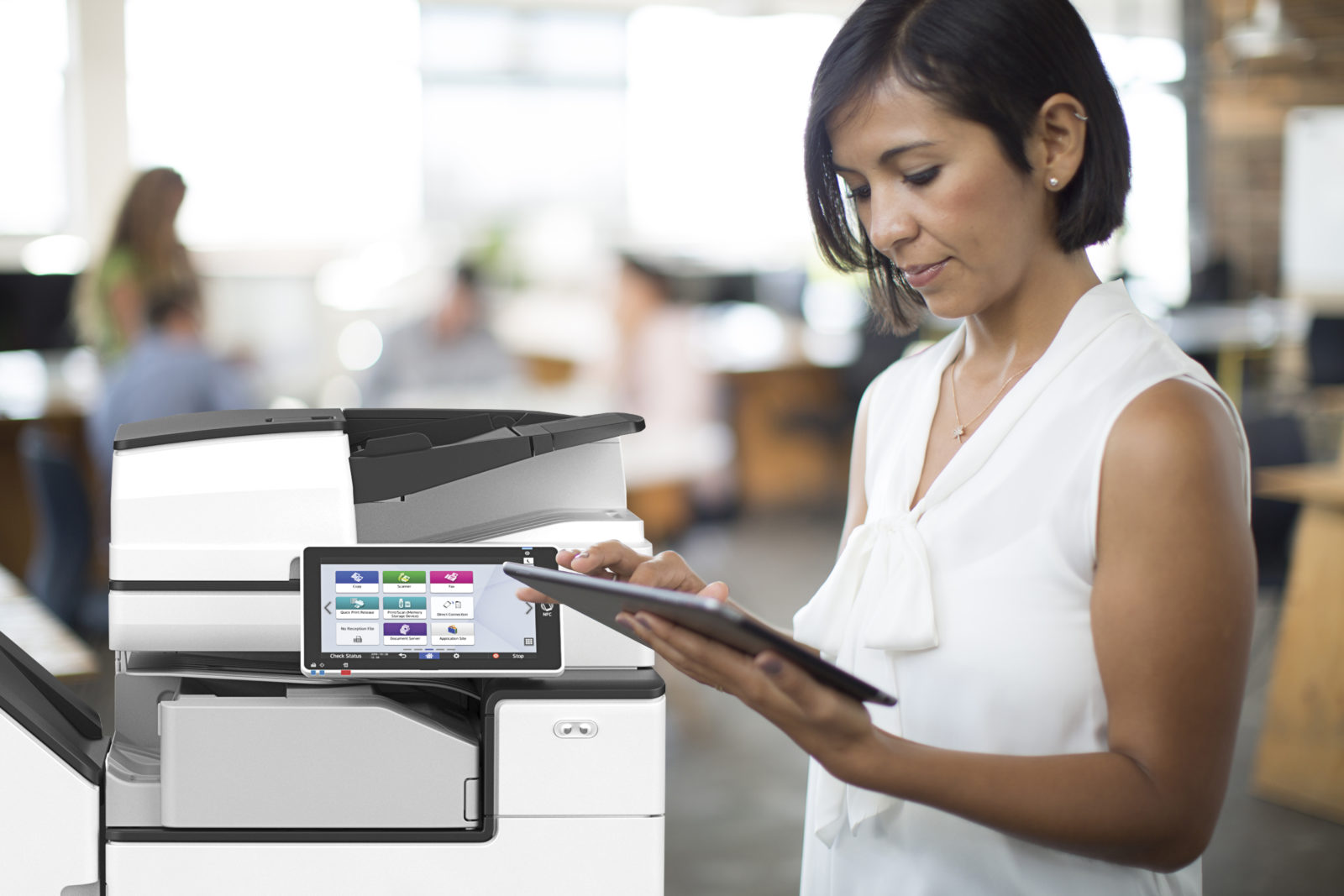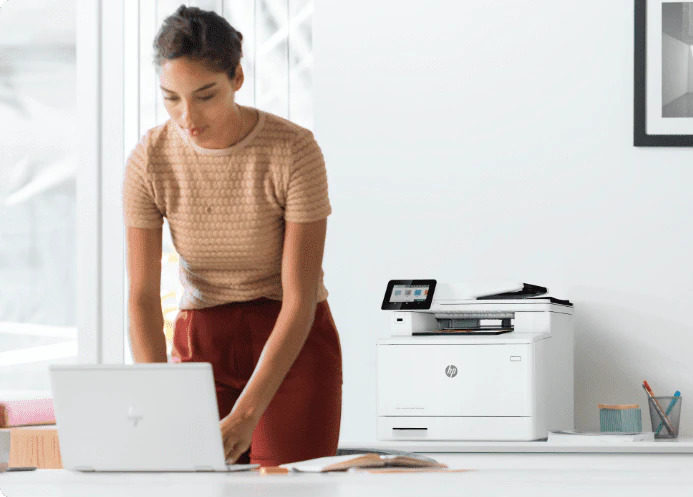
Printer Access Security
Unauthorized use of your office equipment could not only cost you money but could also lead to breaches in data security. That is why proper security for network printers starts at the device.
Modern network and multifunction printers come with access control, authentication, and other built-in security features by printer manufacturers. However, many of these network security features are not enabled by IT administrators, making business printers potential targets to hackers due to their known security holes.

Common Printer Security Risks
Nowadays, companies have no idea that they are vulnerable to high-risk situations with their office printers, such as the following:
- Theft: Print-sensitive documents that are not immediately secured can be easily swiped from anyone in the office. A proper way to restrict access is to lock down the printer using a password, enforce physical security by housing your devices in a safe area and incorporate locks, badges, and smart cards. An unsecured printer is easily accessible both physically and digitally.
- Printer attacks: Even the simplest print job can lead to a compromised printer and a major security risk. Today’s modern printing devices have memory chips and/or hard drive units that are a potential treasure trove of data for cybercriminals. DDoS attacks are common and used by hackers that remotely access the network and wreak havoc on sensitive information. These individuals find sensitive data that is easiest to be accessed remotely and either bring the system down to a halt with phony print jobs or use the device as a pawn.
- Network vulnerability: Many printers suffer from network vulnerabilities. An unsecured network printer can put the entire network at risk. A single open vector can access any connected device, making these “secure printers” compromised.
- Data breaches: From social security numbers to customer data and other confidential information, there is just about anything stored in printer caches. Information like this can be pulled out from most printers if left unguarded. Data encryption and improved security features on every printer are solid strategies to tackle this problem. For most organizations that don’t want to go through all the trouble of securing their new printers, IT service professionals are the best solution to this problem.
Now, let’s look at some of the best ways to prevent unauthorized print jobs and protect sensitive information on your devices.
How To Secure Your Printer? Network Printer Security Best Practices
We know that keeping your information flowing and protected is not easy, especially with today’s modern devices and the technologies they use. Below, we show some basic ways to safeguard your printers and prevent attacks.
The below mentions how printers are a commonly overlooked device for proper network security. A printer that is not secure can open you up to many risks, including sensitive data loss and cyber-attacks. If you are not ready or capable of protecting your network, you can rely on our expertise and let our experts at TGI safeguard your network.

Limit or disable your network printing
Network printer security is essential for all devices, including your computers and printers. Users should review and disable anything involving printing over the Internet. Failing to do that allows hackers to do all sorts of nasty things, from accessing your data to launching DDoS attacks and overwriting any or all information you have on your hard drive or even selling or giving your sensitive information to competitor companies. To do this, don’t use wireless printing, disable HTTP from your Windows registry settings, and don’t forget to turn off your printer when you are not using it.

Secure your printing ports - Network printer security
Secure your printing ports if you don’t want a print scenario where your data gets lost or stolen from other systems. These are one of the easiest avenues for hackers to access your printer. For instance, the standard protocol for secure printing on new printer devices is IPPS via SSL port 443, so you should leave that open.

Use a firewall
You need a reliable firewall. If you are running Windows, your operating system probably has a pre-installed firewall. However, if you want advanced protection, you might have to buy a specialized one.

Update your printer firmware to the latest version
Your printer firmware needs to be up-to-date security-wise. Closing the known holes with the latest version will help prevent some basic printer issues. This is especially important if your printer(s) is at home.

Don't use the public internet
Use a private IP address, so that your printer is unavailable from the public internet. This should be a recurring reminder to everyone, especially organizations that leave their printer WiFi open as an easy entry to their systems.

Change your default password to a strong passphrase.
Knowing that most printers are connected to WiFi, it’s easy to understand that they can be easily accessed with a password. If you haven’t changed yours in a while, do it immediately – just like your computer, users from outside your organization can figure out easy passwords for your printers and compromise your business data.

Don't run unnecessary services
Many printers have insecure and unnecessary protocols such as Telnet, HTTP, and FTP. If you need command line access, use SSH instead. Leaving these services enabled allows attackers to access the printer data directly and compromise the operating system or printer network.
Secure Your Next Print Job With A Default Password – Contact Us Today
TGI can help you secure your copier/printers in many ways, from simple 4-digit access codes to complex card-authentication devices linked to Active Directory. We can change the default password on your printers, update them to the latest version and do firmware updates, protect your hard drives and protect unused protocols that allow hackers to gain access and compromise your network from outside your organization.
To receive your free security consultation, fill out our online form or contact a sales representative at 1-866-468-4462.
